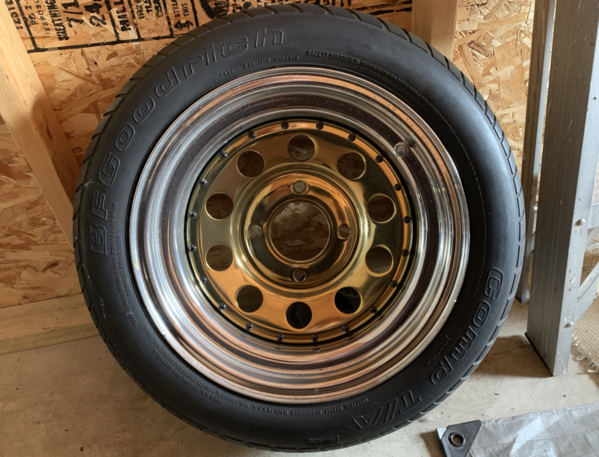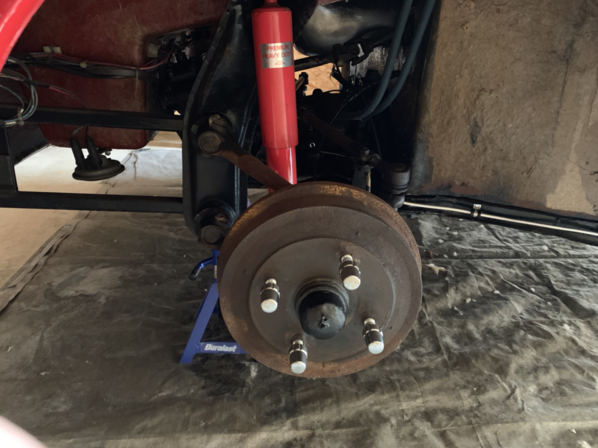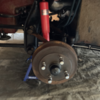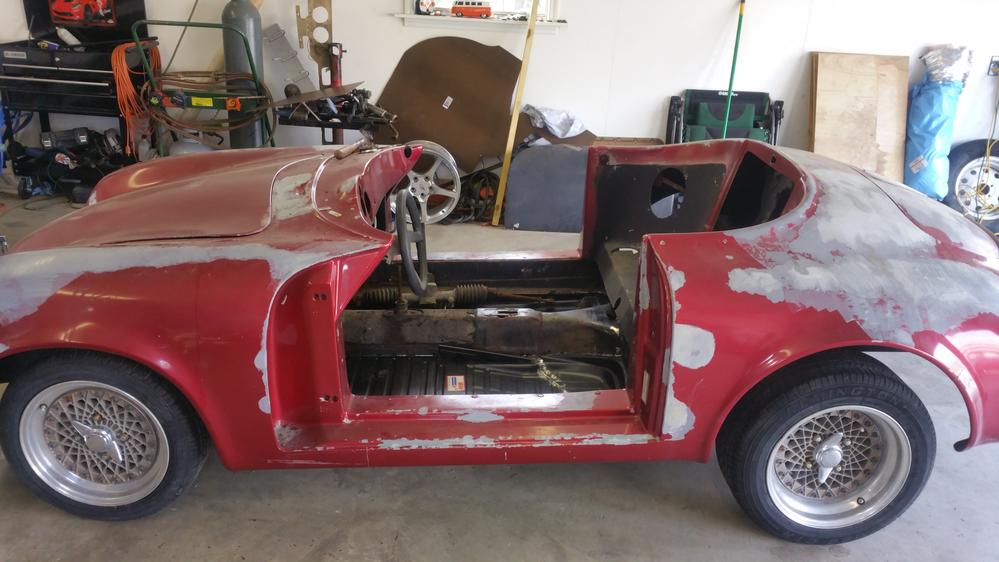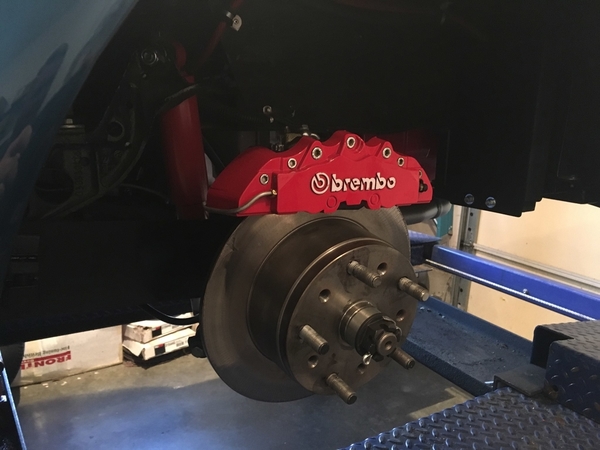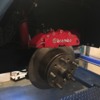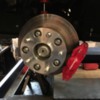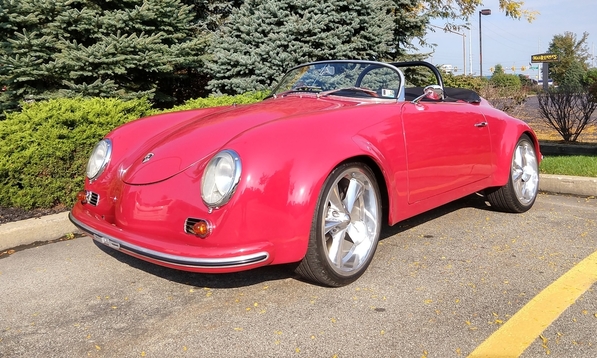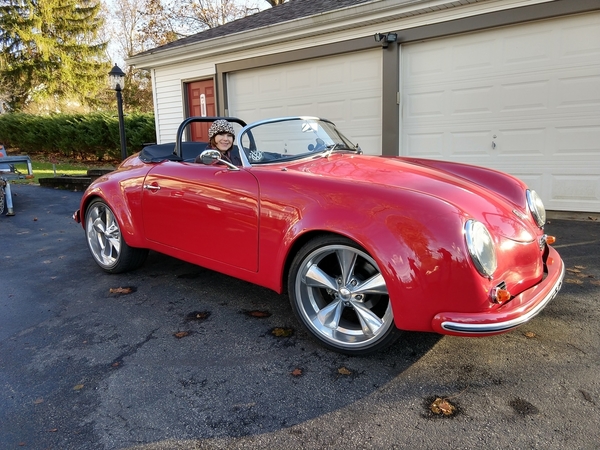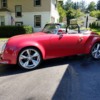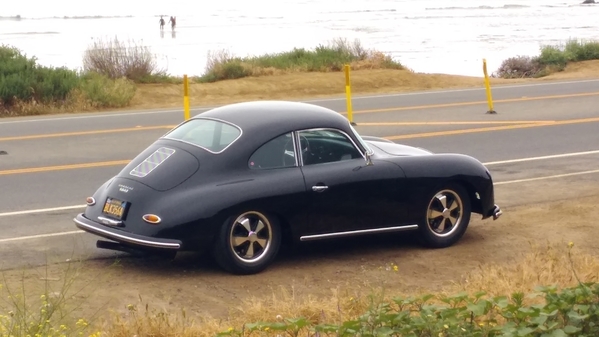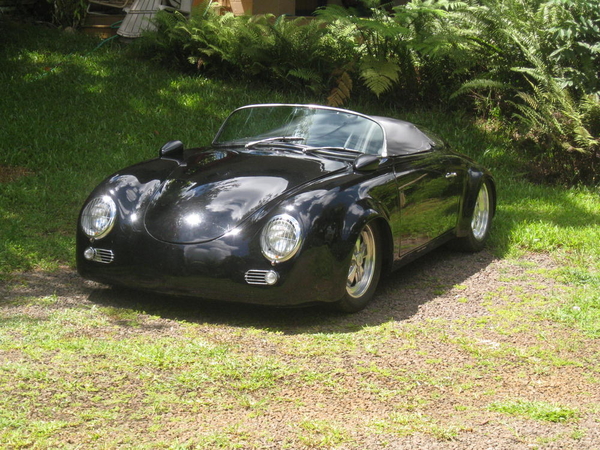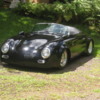Hey, Bob. I'm the guy with the white Speedster with Fuchs wheels up above. I have a set of original Fuchs rims from a 1989 Porsche 911.
My rims are 16" x 6" in the front with 205/50 tires. The rears used to be 16" X 7" with 225/50 tires, but for ease of rotating them I swapped for a pair of 16" X 6" back there, too, with the same 205/50 tires. With the 225's on the rear, the track handling was phenomenal, but I didn't get much opportunity to use all that handling on the street and I couldn't rotate beyond left/right/front swaps.
Since you have an early 70's pan I assume it is a full IRS suspension, so the things you have to watch out for are: Rubbing the inside of the tire against the spring plates as the wheel gets wider, and rubbing the outside top edge of the tire against the inside of the body as it flows down to the fender lip (but mostly if the car has been really lowered). The swing arm suspension allows a little more tire back there towards the outside because the tops of the wheels turn in as the suspension is lowered.
I am using 1-1/4" spacer/adapters all around to take me from the VW 4-bolt hub (4 X 130) to a 5-bolt Porsche pattern (5 X 130) and that spacing gets the rears out to fill the wheel well nicely. The fronts could use another 1/4" - 1/2" more, but honestly I'm happy with what I have. I got mine from Pelican Parts over a decade ago, they are billet T-60 aluminum and very well made but cost me $125 per wheel. I've seen others on eBay lately, just as nice for a lot less money, but do not get cast adapters. They are much weaker than billet aluminum and you want T-60 or 6060 aluminum or harder.
Original polished-spoke Fuchs in show shape will now run you anywhere from $800 to $1,600 EACH  although I sometimes see some a tad cheaper on eBay. Other custom wheels for Porsche are much cheaper and there are TONS of them with a Chevy 5-bolt pattern for real short money, comparatively, so you might look for Chevy pattern rims that look cool and go in that direction - it just means buying a different adapter.
although I sometimes see some a tad cheaper on eBay. Other custom wheels for Porsche are much cheaper and there are TONS of them with a Chevy 5-bolt pattern for real short money, comparatively, so you might look for Chevy pattern rims that look cool and go in that direction - it just means buying a different adapter.
Some people have gone to 17" rims which fill the wheel well very nicely (like they were made for it) but they have to run 40-series tires in order not to rub the underside of the body.
So that's it. The first step is to find a wheel design that you like, then see what sizes (diameter, width, set-back and dish dimensions) it comes in, what bolt pattern they offer, then match an adapter to it and your 4-bolt hubs. When you get that far, it's time to do the math and see if various combinations will fit your space between the spring plates and the body/fender lip versus the spacing of the rear hubs and adapter facing surface (you gotta pull the current wheels and get in their with a measuring tape and framing square and just figure it all out). Sounds complicated, but it isn't. Just takes a few minutes to crank through it and make sure everything is going to fit.
If you're planning on running the car real low, then going to 40-series rubber cures a lot of ills, and you'll find that 16" rims will fit better (but you might just squeeze 17's in there).
Hope this isn't too confusing. gn






